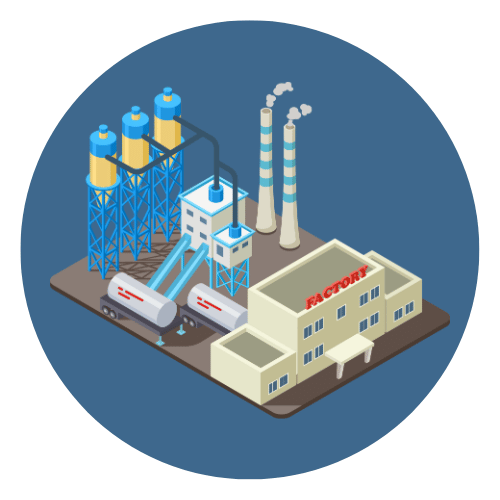Hydraulic Schematic Symbols : How to read a hydraulic schematic symbol diagram
Contents
- 1 What are Hydraulic Schematic Symbols ?
- 2 Basics of Hydraulic Systems
- 3 Components of Hydraulic Schematic Symbols
- 4 Understanding Hydraulic Schematic Symbols
- 5 Symbols for Hydraulic Pumps and Motors
- 6 Symbols for Hydraulic Cylinders
- 7 Valves in Hydraulic Systems
- 8 Accumulators and Filters
- 9 Reservoirs and Fluid Conductors
- 10 Accessory Symbols
- 11 How to read a hydraulic schematic symbol diagram
- 12 Advanced Symbols and Applications
- 13 Troubleshooting Using Schematic Symbols
- 14 Conclusion
- 15 Final Thoughts

Contents1 1.What is Electrolytic Corrosion?1.1 ✅ Key Characteristics of Electrolytic Corrosion:1.2 🔁 How Electrolytic Corrosion Works (Simplified):1.3 🛡️ Prevention Methods:1.4 📌 Example:2 2. The Science Behind Electrolytic Corrosion2.1 2.1 Electrochemical Basics2.2 2.2 Key Reactions in Electrolytic Corrosion2.3 2.3 Sources of Electrical Current2.4 2.4 Difference Between Electrolytic and Galvanic Corrosion2.5 2.5 Conditions Favoring Electrolytic Corrosion2.6 2.6 […]

Contents1 1. What Is Galvanic Corrosion?1.1 How Does It Work?1.2 Examples of Galvanic Corrosion1.3 Key Conditions Required1.4 Why Is It Important?2 2. The Electrochemical Principles Behind Galvanic Corrosion2.1 2.1 Formation of a Galvanic Cell2.2 2.2 Anode and Cathode Reactions2.3 2.3 Role of Electrolytes2.4 2.4 Electrode Potential and the Galvanic Series2.5 2.5 Surface Area Ratio Effect2.6 […]

Contents1 I. Why Is Pipe Cleaning Important?1.1 1. Preventing Clogs and Flow Restrictions1.2 2. Avoiding Contamination1.3 3. Enhancing Equipment Longevity1.4 4. Maintaining System Efficiency1.5 5. Complying with Regulations and Standards1.6 6. Reducing Downtime and Maintenance Costs2 II. When Should You Clean a Pipe?2.1 1. Signs That Indicate a Pipe Needs Cleaning2.2 2. Scheduled Preventive Maintenance2.3 […]

Contents0.1 Fahrenheit to Celsius Conversion: °F to °C Calculator1 I. Understanding the Fahrenheit and Celsius Scales1.0.1 1. Fahrenheit Scale1.0.2 2. Celsius Scale1.1 Comparing Fahrenheit and Celsius2 II. The Formula for Fahrenheit to Celsius Conversion2.0.1 Step-by-Step Explanation2.0.2 Example Calculations3 III. Examples of Fahrenheit to Celsius Conversion3.0.1 Example 1: Freezing Point of Water3.0.2 Example 2: Room Temperature3.0.3 […]

Contents1 I. What is Pipe Wrap Insulation?2 II. Benefits of Pipe Wrap Insulation2.0.1 1. Energy Efficiency2.0.2 2. Prevents Freezing2.0.3 3. Condensation and Corrosion Prevention2.0.4 4. Noise Reduction2.0.5 5. Cost Savings2.0.6 6. Enhanced Safety2.0.7 7. Environmental Impact3 III. Types of Pipe Wrap Insulation3.0.1 1. Fiberglass Pipe Wrap3.0.2 2. Foam Pipe Wrap3.0.3 3. Rubber Pipe Wrap3.0.4 4. […]

Contents1 I. Understanding kPa and psi1.1 What is kPa?1.2 What is psi?1.2.1 Comparison and Usage2 II. The kPa to psi Conversion Formula2.0.1 Formula for Converting kPa to psi2.0.2 Formula for Converting psi to kPa2.0.3 Why This Conversion Matters3 III. Step-by-Step Conversion Example3.0.1 Example 1: Converting kPa to psi3.0.2 Example 2: Converting psi to kPa4 IV. […]

Contents1 I. What is a Pipe Schedule?1.0.1 Key Elements of a Pipe Schedule:1.0.2 Example of a Pipe Schedule:1.0.3 Importance of Pipe Schedules:2 II. Understanding Pipe Schedule Charts2.1 Key Components of a Pipe Schedule Chart:2.2 Example of Reading a Pipe Schedule Chart:2.2.1 How to Use a Pipe Schedule Chart:2.3 Importance of Using Pipe Schedule Charts:3 III. […]

Contents1 I. What is a Check Valve in Pneumatics?2 II. How Does a Check Valve Work?2.0.1 1. Forward Flow:2.0.2 2. Closing Mechanism:2.0.3 3. Reverse Flow Prevention:2.0.4 Internal Components of a Check Valve:2.0.5 Pressure Differential:2.0.6 Summary of Check Valve Operation:3 III. Check Valve Pneumatic Symbol Diagram 3.0.1 Basic Symbol of a Check Valve:3.0.2 Detailed Breakdown of the […]

Contents1 I. What is the Maximum Allowable Piping Length Method?2 II. Factors Influencing Maximum Allowable Piping Length2.0.1 1 Pressure Drop2.0.2 2 Flow Rate2.0.3 3 Pipe Diameter2.0.4 4 Fluid Properties2.0.5 5 Elevation Changes2.0.6 6 Fittings and Valves3 III. How to Calculate Maximum Allowable Piping Length ?3.0.1 Step 1: Determine the Allowable Pressure Drop3.0.2 Step 2: Calculate […]

Contents0.1 I. Introduction0.1.1 A. Overview of Welding Joints1 II. Butt Joint1.0.1 A. Definition and Description1.0.2 B. Advantages1.0.3 C. Disadvantages2 III. Corner Joint2.0.1 A. Definition and Description2.0.2 B. Advantages2.0.3 C. Disadvantages3 IV. Lap Joint3.0.1 A. Definition and Description3.0.2 B. Advantages3.0.3 C. Disadvantages4 V. Tee Joint4.0.1 A. Definition and Description4.0.2 B. Advantages4.0.3 C. Disadvantages5 VI. Edge Joint5.0.1 […]


 Automation System
Automation System  Energy Engineeing
Energy Engineeing  Instrumentation System
Instrumentation System  Mechanical Engineeing
Mechanical Engineeing  Piping Technologies
Piping Technologies  Transportations
Transportations  Manufacturing
Manufacturing  Training Material
Training Material 






